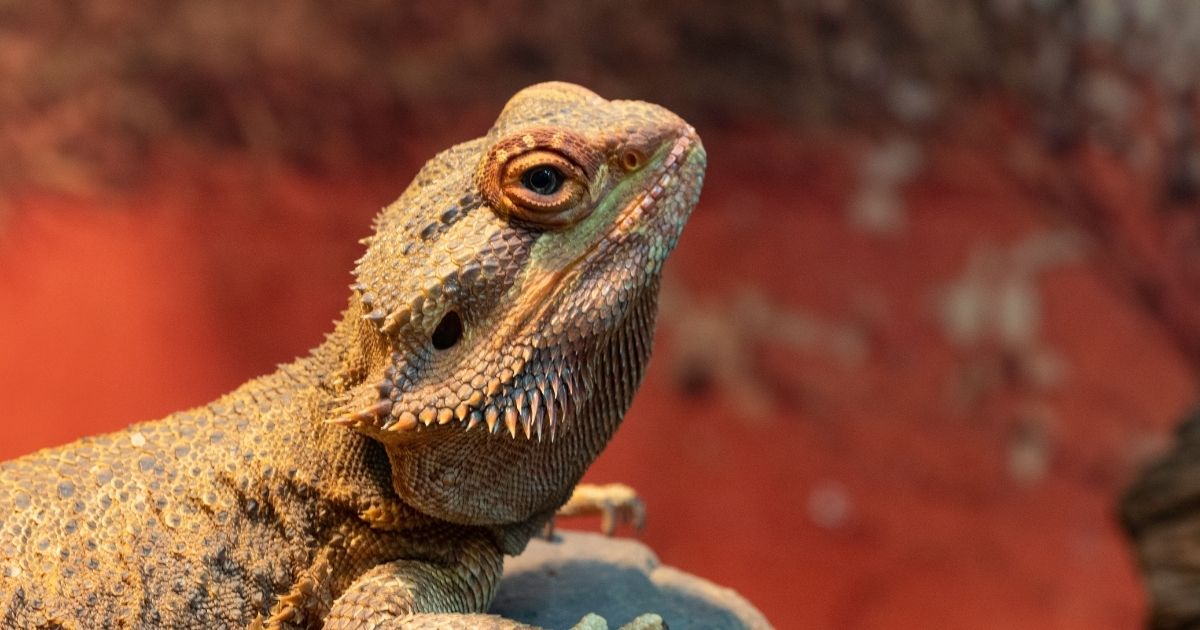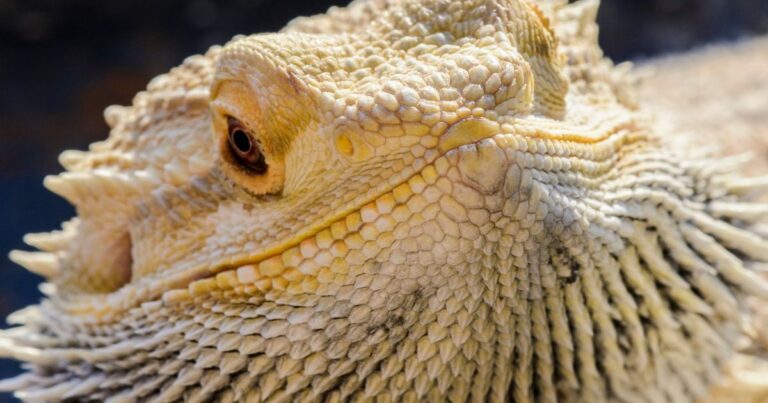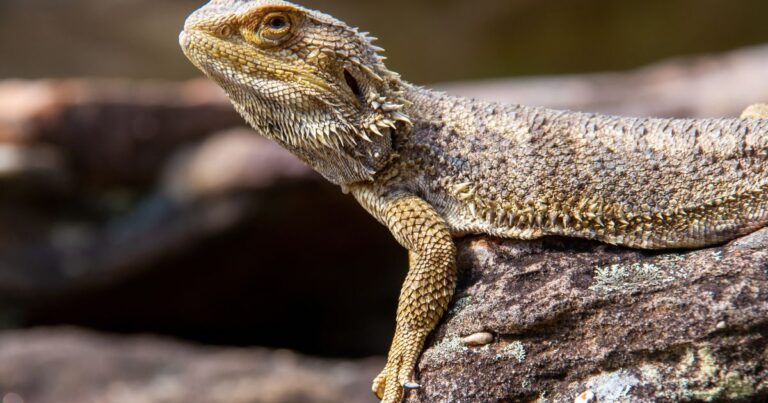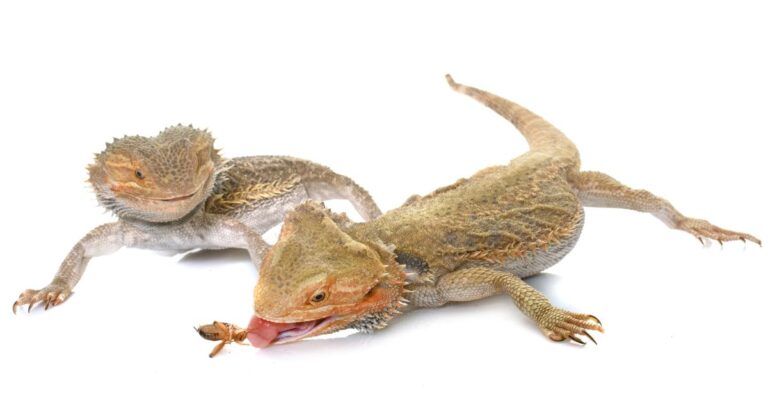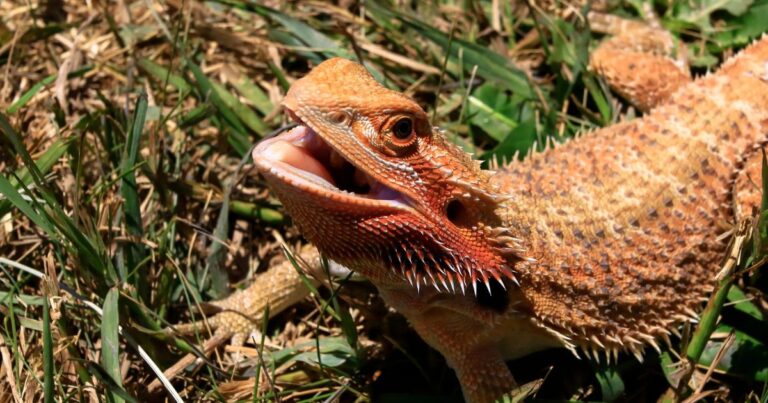Bearded Dragon Tumors and Abnormal Growths: A Guide for Young Dragon Lovers
Table of Contents
Key Summary Table: Bearded Dragon Tumors and Abnormal Growths
| Type of Growth | Description | Symptoms | Treatment |
|---|---|---|---|
| Tumors | Abnormal growths that can occur in various parts of the body | Lump or swelling, changes in behavior, loss of appetite | Depends on the type and location of the tumor, may involve surgery |
| Cysts | Fluid-filled lumps that can occur due to infection, injury, or blocked gland | Lump filled with fluid | Usually treated by a vet, do not attempt to pop at home |
| Hemipenal Bulges | Normal feature in male bearded dragons located near the base of the tail | Symmetrical bulges at the base of the tail | No treatment needed, normal part of anatomy |
| Warts | Abnormal growths that can sometimes look like tumors | Rough and bumpy growths | Check with a vet to confirm if it’s a wart or tumor |
“Bearded dragon tumors and abnormal growths” – sounds scary, right? But don’t fret! This article is your trusty map to navigate this tricky terrain. We’ll explore the mysterious lumps and bumps on our scaly pals, and learn how to keep them healthy and happy. Ready for an adventure? Let’s go!
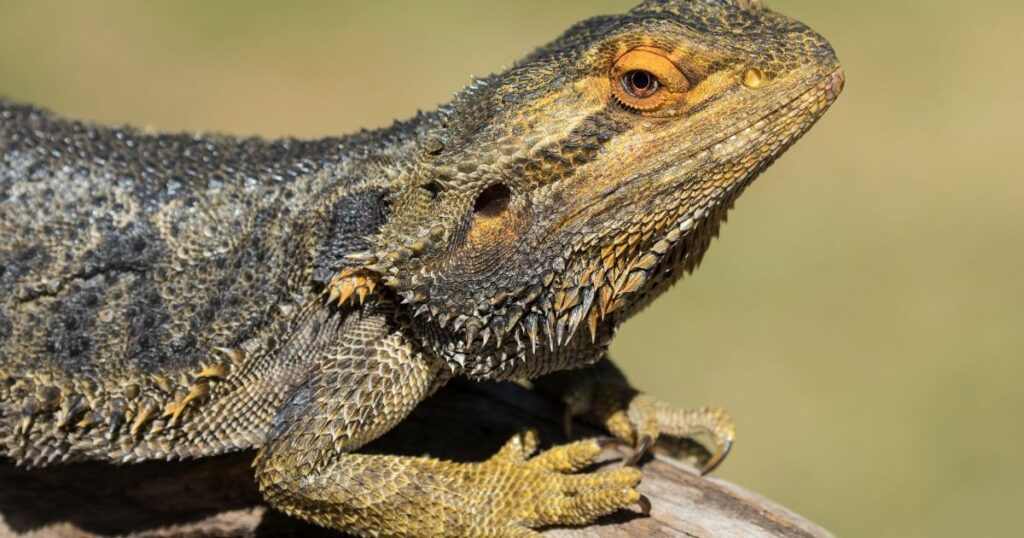
Introduction
Well, hello there, dragon aficionados! It’s Emily here, your trusty guide on this wild and wonderful journey into the world of bearded dragons. Now, you might be wondering, why are we talking about something as serious as tumors and abnormal growths? Well, let me tell you a little story.
Knowledge is power. The more we know about our bearded buddies, the better we can care for them.
One sunny afternoon, I was hanging out with my best scaly buddy, Gilbert. He was basking under his heat lamp, looking as cool as a cucumber, when I noticed something. No, Gilbert wasn’t doing his hilarious head-bobbing dance. He was just being his usual chill self. But it got me thinking. What if one day, Gilbert wasn’t feeling his best? What if he had a lump or a bump that wasn’t supposed to be there?
Now, don’t worry. Gilbert is as fit as a fiddle. But it’s important for all us dragon lovers to know about the health issues our scaly friends might face. And that’s why we’re here today, to talk about bearded dragon tumors and abnormal growths.
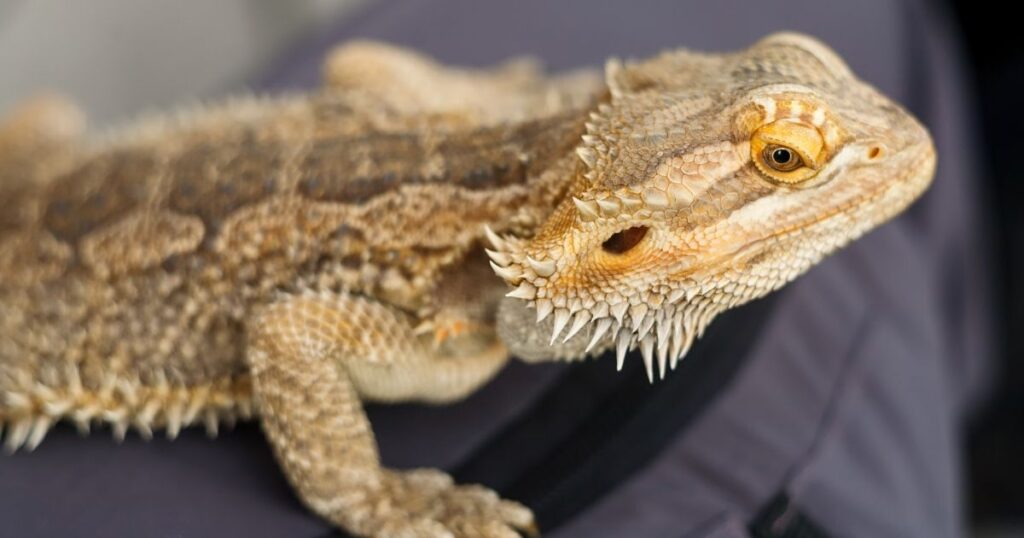
Understanding Bearded Dragon Tumors
| Common Types of Tumors | Symptoms | Treatment |
|---|---|---|
| Neuroendocrine Tumors | Changes in behavior, loss of appetite | Depends on the severity, may involve surgery |
| Other Tumors | Lump or swelling, changes in behavior | Depends on the type and location of the tumor |
Alright, let’s get down to brass tacks. What exactly are tumors? Well, in the simplest terms, tumors are abnormal growths. They’re like uninvited guests at a party, showing up when they’re least expected.
So, why might a bearded dragon get a tumor? Well, just like in humans, there’s no one-size-fits-all answer. It could be due to genetics, environmental factors, or just plain old bad luck. But the important thing is to know the symptoms.
If your bearded dragon has a tumor, you might notice a lump or swelling. They might not be eating their favorite crickets or veggies, or they might seem a bit under the weather. If you notice any of these signs, it’s time to take a trip to the vet.
Signs your bearded dragon might have a tumor:
- Lump or swelling
- Changes in behavior
- Loss of appetite

Common Types of Tumors in Bearded Dragons
| Tumor Type | Description | Symptoms |
|---|---|---|
| Neuroendocrine Tumor | Develops in neuroendocrine cells | Changes in behavior, loss of appetite |
| Other Tumors | Can develop in various parts of the body | Lump or swelling, changes in behavior |
Now, not all tumors are created equal. In bearded dragons, there are a few types that are more common than others.
First up, we have neuroendocrine tumors. These bad boys develop in the neuroendocrine cells, which are involved in the nervous and endocrine systems. They’re like the double agents of the cell world. Neuroendocrine tumors can be tricky to spot, but they can cause a range of symptoms, from changes in behavior to loss of appetite.
But that’s not all. Bearded dragons can also develop other types of tumors and abnormal growths. Each one is a different unwelcome guest at the party, and each one needs to be shown the door in a different way.
Bearded Dragon Cysts: What You Need to Know
| Causes of Cysts | Symptoms | Treatment |
|---|---|---|
| Infection, Injury, Blocked Gland | Lump filled with fluid | Usually treated by a vet |
Let’s switch gears for a moment and talk about cysts. Now, cysts are not the same as tumors, even though they might seem similar. Think of cysts as the annoying neighbors who play their music too loud, while tumors are the uninvited party guests. They’re both problems, but they’re different kinds of problems.
So why might a bearded dragon develop a cyst? Well, it could be due to an infection, an injury, or even just a blocked gland. It’s like when you get a pimple because your skin’s oil glands get blocked. But don’t worry, cysts are usually not a big deal and can be treated by a vet.
If your bearded dragon has a cyst, you might notice a lump that’s filled with fluid. It might look a bit like a tiny water balloon under their skin. If you see something like this, don’t try to pop it! Remember, we’re dragon lovers, not dragon doctors.
Causes of cysts in bearded dragons:
- Infection
- Injury
- Blocked Gland
Hemipenal Bulges: A Unique Bearded Dragon Feature
Now, let’s talk about something a bit different: hemipenal bulges. These are a normal feature in male bearded dragons, and they’re located near the base of the tail. It’s like how boys and girls have different body parts – in bearded dragons, boys have hemipenal bulges.
But how can you tell the difference between normal hemipenal bulges and abnormal growths? Well, normal hemipenal bulges are usually symmetrical and don’t change much over time. If you notice a lump that’s getting bigger or is only on one side, that might be a cause for concern.
Regular health checks are super important for bearded dragons. It’s like when you clean your room and find that old sandwich you lost a month ago. Sometimes, you find things that need to be taken care of.
Warts or Tumors? How to Tell the Difference
| Type of Growth | Appearance | Treatment |
|---|---|---|
| Warts | Rough and bumpy | Check with a vet |
| Tumors | Smoother, can be a lump or swelling | Depends on the type and location of the tumor |
Alright, let’s tackle another tricky topic: warts. Now, warts in bearded dragons are not the same as warts in humans. They’re not caused by a virus, and they’re not contagious. They’re just abnormal growths that can sometimes look a bit like tumors.
So how can you tell the difference between a wart and a tumor? Well, warts are usually rough and bumpy, while tumors are smoother. But if you’re not sure, it’s always best to check with a vet. Remember, when it comes to our scaly friends, it’s better to be safe than sorry.
The more we know about our bearded buddies, the better we can care for them.
The more we know about our bearded buddies, the better we can care for them.

Conclusion
Well, there you have it, folks. We’ve taken a wild ride through the world of bearded dragon tumors and abnormal growths. It might seem a bit scary, but remember, knowledge is power. The more we know about our bearded buddies, the better we can care for them.
So keep learning, keep exploring, and keep loving your bearded dragons. And remember, every dragon has a story. Let’s help them tell it.
If you want to learn more about bearded dragon care, check out the Bearded Dragon Care category. And don’t forget to check out my index page on Bearded Dragon Health Issues.
Other pages of interest: Bearded dragon thermal burns and heat-related injuries and Metabolic bone disease (MBD) in bearded dragons
Disclaimer: This article is intended for informational purposes only. It’s not a substitute for professional veterinary advice, diagnosis, or treatment. Always seek the advice of your veterinarian with any questions you may have regarding the medical condition of your pet.
Frequently Asked Questions
Why does my bearded dragon have lumps?
Well, lumps on your bearded dragon could be due to a number of reasons. It could be a tumor, a cyst, or even just a normal part of their anatomy like a hemipenal bulge. It’s like when you find a mysterious lump in your mashed potatoes – it could be a chunk of potato, a piece of garlic, or maybe you just dropped a pea in there. If you’re unsure, it’s always best to check with a vet.
What are the symptoms of cancer in bearded dragons?
Cancer in bearded dragons can show up as lumps or swellings, changes in behavior, or a loss of appetite. It’s like when you’re feeling under the weather and you just want to curl up in bed with a bowl of ice cream. Except, in this case, the ice cream is crickets.
What is a neuroendocrine tumor in bearded dragons?
A neuroendocrine tumor is a type of tumor that develops in neuroendocrine cells. It’s like when you’re trying to grow tomatoes, but you end up with a pumpkin instead. It’s not what you expected, but it’s still a type of growth.
Can bearded dragons get cysts?
Yes, bearded dragons can get cysts. It’s like when you get a pimple because your skin’s oil glands get blocked. But don’t worry, cysts are usually not a big deal and can be treated by a vet.
What are Hemipenal bulges on a bearded dragon?
Hemipenal bulges are a normal feature in male bearded dragons, located near the base of the tail. It’s like how boys and girls have different body parts – in bearded dragons, boys have hemipenal bulges.
What are the warts on my bearded dragon?
Warts in bearded dragons are abnormal growths that can sometimes look a bit like tumors. They’re not caused by a virus, and they’re not contagious. They’re just a bit rough and bumpy, like the surface of a pickle.
Is cancer common in bearded dragons?
Cancer is not particularly common in bearded dragons, but it can happen. It’s like finding a four-leaf clover. It’s not something you see every day, but it’s possible.
What is the most common bearded dragon disease?
The most common diseases in bearded dragons are metabolic bone disease and respiratory infections. It’s like how the common cold is, well, common in humans.
What are the signs of an aneurysm in bearded dragons?
Aneurysms in bearded dragons can cause symptoms like weakness, loss of balance, or even paralysis. It’s like when you spin around too fast and suddenly you can’t walk straight. If you notice these symptoms in your bearded dragon, get them to a vet right away.
